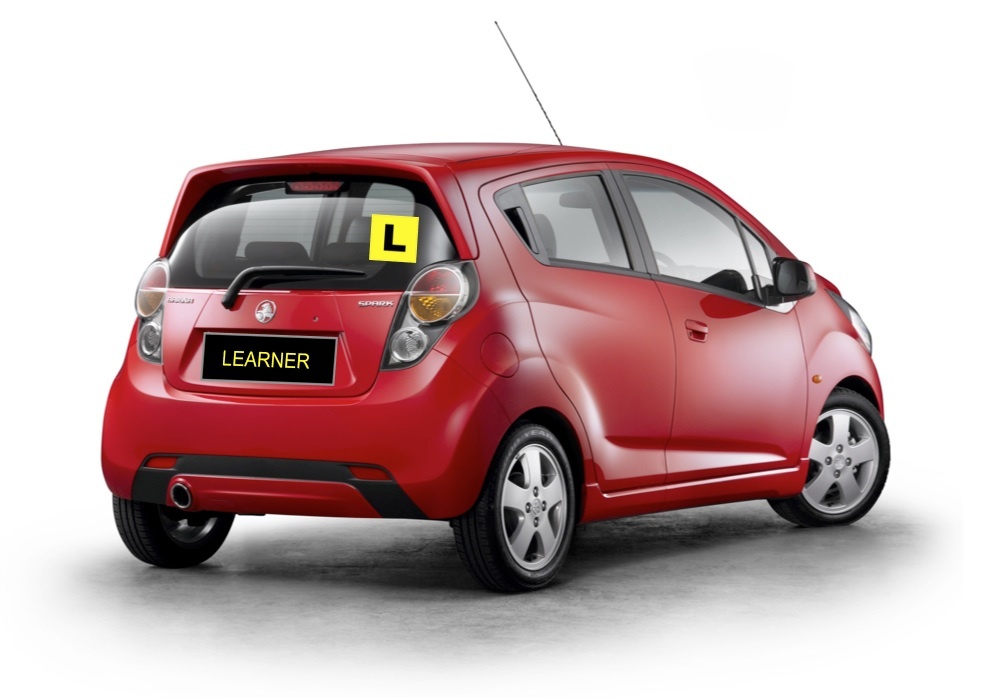Five tips when looking for a first car for a learner driver

It is a nerve-racking experience for any parent when their son or daughter has reached the age of being able to get their learners permit. Every parent’s hope is that they can give their teenager as much supervised experience on the road as possible before they are out there on their own.
From the first drive bunny hopping in the family car through to professional driving lessons as time goes on the learner driver becomes more comfortable with the whole experience of driving.
Logging the required 100 hours of experience is mandatory for getting a probationary licence. It is also advisable to purchase the vehicle that the driver is going to be driving in before they graduate to their p plates. That way then they will have the experience in their own vehicle in all different road and weather conditions.
The last thing that anyone wants is to be stranded at the side of the road with a broken down car, especially young drivers with little experience. It comes down to buying the right vehicle and maintaining that vehicle to avoid this situation.
The big question is:
What is the safest car to buy within budget for a learner driver?
Here are some tips that can help along the way.
- Know that just because a car has a Safety Certificate it doesn’t mean that the car is the best buy and in pristine condition. A Safety Certificate is an assessment that the vehicle has met the minimum safety standards for being road worthy. For new to the road drivers you definitely want a vehicle that meets the highest possible standard rather than the minimum. It should also be noted that the vehicle may have oil leaks but as long as they are not dripping onto the road surface or the exhaust at the time of inspection the examiner cannot fail the roadworthy. Have someone independently check over the vehicle whether it be a mechanically savvy family member or friend, otherwise engage a professional.
- Check with the insurance company to see how much it is going to cost to insure the driver with that particular type of vehicle. They do vary and some vehicles can be quite expensive. You will also need to check on your own insurance policies to see how much it is going to cost to put your learner driver on as an additional driver on your family vehicle as well.
- Always get a pre-purchase inspection especially on vehicles that are price attractive to learner drivers. At this time of their lives the last thing that they need is a large bill from the mechanics saying they have brought a lemon that needs extensive repairs under the hood.
- When buying the vehicle have the learner driver have a drive of the vehicle (if the buyer is okay with it) under supervisor of course. That way then they will be able to pick up if there are any problems with the way the vehicle drives for them. This could be from the seat height, is this adjustable, is the steering wheel in a comfortable position and can this be adjusted? Have a close look at the blind spots in the vehicle as they can be larger in some vehicles more than others.
- Look up the rules in relation to what a P1 and P2 licence holders under the age of 25 which is located on Department of Transport website. High-powered vehicle restrictions
The vehicles will be referred to as High-Powered Performance vehicles.
High-Powered Vehicles are categorised by the following:
- Eight or more cylinders
- A Turbo Charged/Super Charged engine (Excluding Diesel engines)
- An Engine that produces more than 210KW as per the manufacturers specifications
- A rotary engine that produces more than 1146CC as per the manufacturers specifications
Any modified engines must have approval. Refer the following act: Section 13 of the Transport Operations (Road Use Management – Vehicle Standards and Safety) Regulation 2010.
There are vehicles that are exempted from these restrictions:
- Suzuki Cappuccino 2D Cabriolet Turbo 3 657-698cc (1992-1997)
- Daihatsu Copen L880 2D Convertible Turbo 4 659cc (2003 or later)
- Smart Fortwo Coupe 2D Turbo 3 698cc (2000 or later)
- Smart Fortwo Cabriolet 2D Turbo 3 698cc (2000 or later)
Understanding that for a first car most p platers are driving a relatively cheap car that is affordable to them. Always remember to shop around as much as possible and remember that sellers will negotiate especially ones who are moving overseas.
Check on carsales.com and other available sources to get a feel what type of vehicles are in within budget. Then the job is about finding the safest car possible for that price.
So, the car is in the driveway and the day is coming nearer for the learner driver to have the wonderful freedom of P plates. The car is no doubt washed to present its best for the first drive but there are other things to consider before hitting the road.
Educate them on basic maintenance of their vehicle.
How to check the tyre pressure
Check the tyre placard for the tyre pressure required for the vehicle. (Which is usually located in the driver’s doorframe, glove box or fuel cap) Show them how to check the pressure of air in the tyres on the vehicle and how frequently they should be checked.
Under bonnet and vehicle maintenance
How to check the engine oil using the dipstick and where to put engine oil when topping up
How to top up the water in the radiator
Where the wiper washer fluid is located for topping up
How to change a tyre
Roadside assistance is always recommended to young drivers especially with the cost of towing and unexpected repairs, that policy can save the driver both time and money.
The main components that are covered in a roadside assistance policy are:
- Emergency Fuel
- Battery jumpstart or replacement
- Towing
- Lockout – the keys are locked in the vehicle
- Wheel Changing
Note: Policies for different companies will vary on what is covered and what is not.











